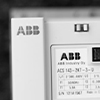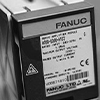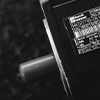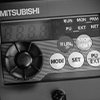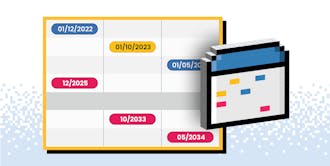OEM lifecycle transparency: Your hidden super-power
July 10, 2025
Written by Robert Juricic, Managing Director of pcn.global

Robert Juricic brings over a decade of specialised expertise in obsolescence management and 30+ years of developing BoM concepts and documentation processes. Having worked with OEMs and EMS providers across five continents, Robert has a unique vantage point on where component lifecycle breakdowns typically occur, and how to prevent them before they become costly emergencies.
Drawing from his multidisciplinary background in documentation, data management, and process automation, Robert helps manufacturers transform component lifecycle management from reactive fire-fighting into a strategic advantage. Through his company's specialised obsolescence management software, services and documentation expertise (including BoM scrubbing and master data management), he enables clients to stay ahead of component change notices and build resilient supply chains.
Picture a Monday shift change: a line-critical photosensor fizzles, maintenance opens the catalogue… and discovers the model was discontinued nine months ago. There is no heads-up and no drop-in replacement. Downtime for an automotive plant can reach €2 million per hour [1], so “we’ll call the broker” is not a strategy.
That’s why a dynamic, always-current Obsolescence Management Plan (OMP) is as essential as your safety manual. It turns nasty surprises into scheduled upgrades and protects margins when parts reach the end of the line.
Why a plan beats panic
- Faster clocks: The average electronic component lifecycle is now < 4 years, down from 10-12 years in the 1990s [2]. Your machinery is likely to run for a decade or more.
- Cost spikes: Emergency redesigns triggered by a single obsolete microcontroller can run €20k - €1.5 m [3]. This depends on validation requirements.
- Quality and compliance: Poor sourcing decisions can create costly quality issues and compliance risks. Working with partners that prioritise traceability and rigorous testing is key to maintaining operational integrity.
A proactive plan is cheap insurance: monitor parts, model sunset risk and secure data directly from the OEM before the clock runs out.
Electronics vs. mechanicals: A transparency mismatch
Electronics
Electronics live under the spotlight. Thanks to industry practice (and regulators who love paperwork), chip makers issue Product Change Notices (PCNs) and End-of-Life (EOL) alerts. In 2023 alone, 328,000 components got formal EOL notices, and some databases ping you the minute one drops [4].
Mechanicals
Mechanicals (motors, gearboxes, cylinders) are a different animal. There’s no PCN standard, and many OEMs post discontinuations as a tiny web blurb, if they mention it at all. You often learn when the purchase order bounces. For automation plants that rely on custom servo drives or HMI screens, this opacity is a downtime disaster waiting to happen.

How to force OEM lifecycle transparency (legally and politely)
1) EOL clauses
Write into every supply agreement:
“Supplier will provide ≥ 9 months’ written notice of discontinuation and accept last-time-buy orders for an additional 3 months.” [5].
If they push back, consider it a future problem waving at you. Be sure to check local laws and regulations to ensure you're fully aware of your rights and obligations in your region.
2) Lifecycle roadmaps upfront
Ask: How long will Model X stay “active”? Is a successor planned? Many electronics OEMs share this under NDA; mechanical suppliers can too, if you insist.
3) Last-time-buy (LTB) and stocking deals
Tie price protection to that notice period, and calculate inventory to cover expected demand plus a safety buffer.
4) Qualified alternates
Mandate “at least two approved sources” for any component above a pre-set criticality score. If a true single-source item is unavoidable, elevate its monitoring frequency. Add a trusty parts supplier to your roster. Obsolescence is a team sport, and a good part supply partner should be on yours.
5) Annual lifecycle audit
Use data services (SiliconExpert, Z2Data) for electronics and direct supplier checks for mechanicals. Tag any part > 70 % through its announced life for review.
These tactics turn nice-to-know into contractual obligations. Therefore, buying you the time (and budget) to react.
The pay-off
Companies that demand lifecycle transparency convert obsolescence from a crisis into a part of standard operations:
- Planned retrofits slotted into shutdown windows, not emergency weekends.
- Inventory optimised: fewer “just-in-case” shelves, more smart buffers.
- Higher uptime: as competitors scramble for the last units, you roll out the upgrade kit you specced a year ago.
Obsolescence is inevitable. Surprise is optional.
Ask the hard questions, put them in writing and review your BoMs like they’re expiring passports. In production automation, visibility isn’t just good practice, it’s a competitive advantage.
Sources:
[3] https://www.z2data.com/insights/what-drives-component-obsolescence
[4] https://datalynq.com/post/rising-obsolescence-in-electronic-components-and-its-solutions
[5] https://www.lawinsider.com/clause/product-discontinuation-notice
